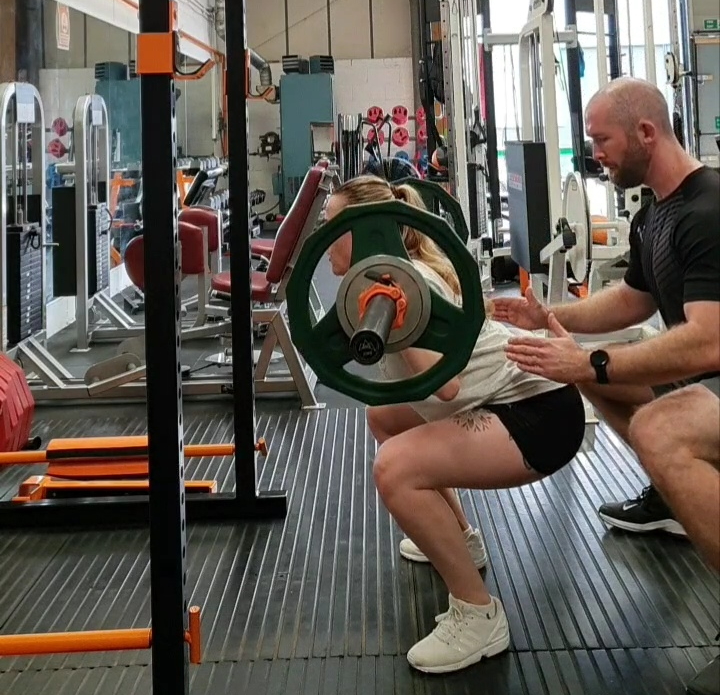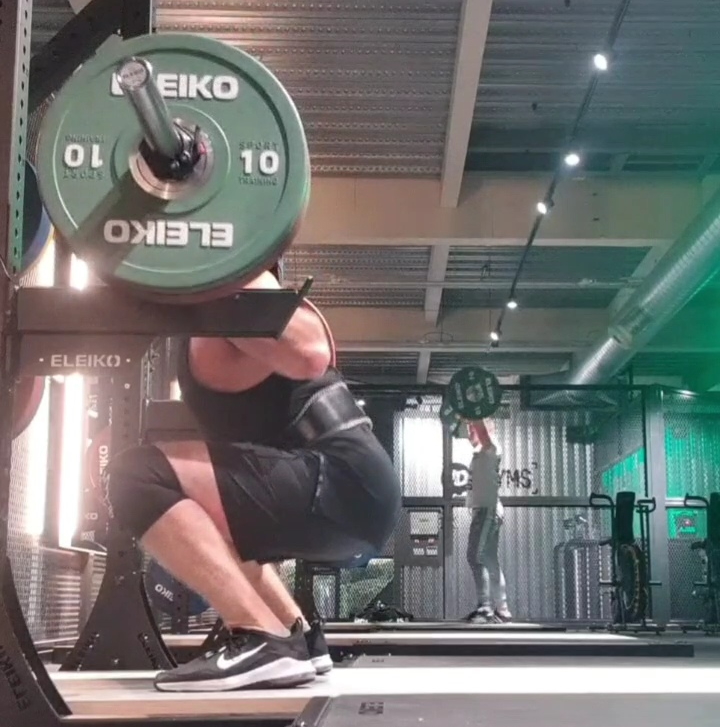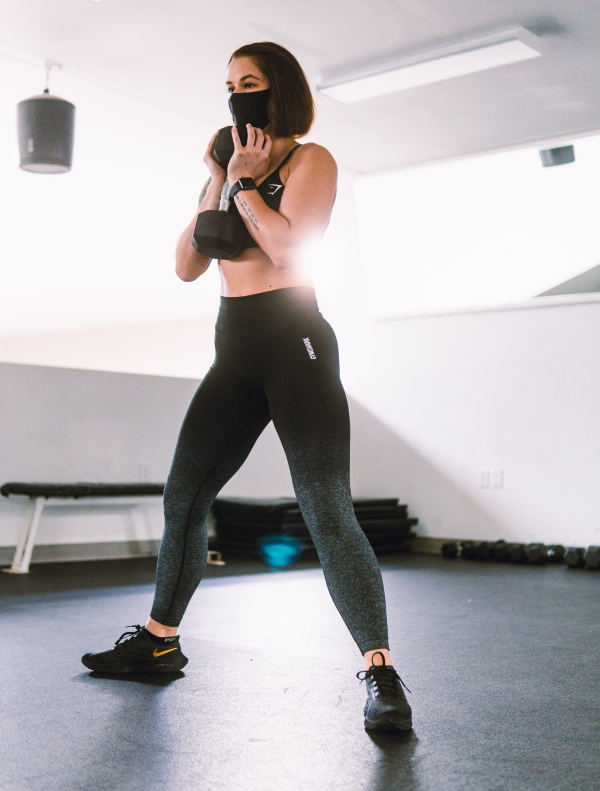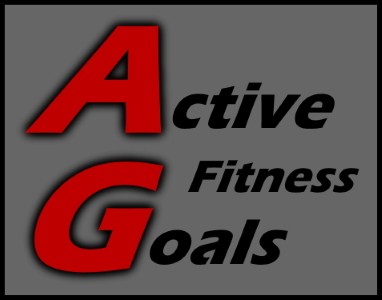Why do beginners often lose balance when they start squatting for the first time?
This is something that I experienced quite a bit when I first started out as a PT. I’d take my new clients onto the gym floor for our initial workout together. And, after a thorough warm up, started the session on the squat rack ready to give barbell squatting a go for the first time. On more than half of these occasions, we’d struggle to master a perfect squat during that first session. Often because of the client losing balance during squats.

This quickly led to me a much better routine for all my new clients. Performing a more thorough warm up & progressive exercises. So that when we did get onto the squat rack, we were in a much better position to master that barbell squat with good form.
Over time, I started to notice a handful of reoccurring patterns with multiple clients.
Most likely factors for losing balance during squats
Calf flexibility
The calves are the muscles that run from your foot (via your Achilles tendon) to your lower leg. These muscles are the ones that you would use to move your heel so that you can go onto your tip-toes. If this muscle is overly tight, you will have limited movement in the opposite direction. Therefore, you will struggle to bend your foot upwards towards the sky.
You can test your calf flexibility easily by standing on a flat surface and pointing your foot upwards – you may want to hold on to something for stability. If you struggle to pull your foot up much off the floor, then chances are your calves are tight and could do with some flexibility work.
The issue during squats, if you have overly tight hamstrings, is that you will be unable to keep your heels on the floor during the full range of movement. Your heels will lift off the ground, causing you to perform the lower part of the squat on just the front of your foot. Less surface area equals less stability.
Hamstring flexibility
Your hamstrings run down the back of your upper leg from the lower pelvis to below the knee. Their functions are to flex your knees & extend your hips.
The main issue you may face during squats, if you have overly tight hamstrings, is that you will struggle to maintain good lower back form during the full squatting movement. So, you will either need to restrict yourself to very short movements, in only the upper portion of your squats, or you will likely experience increased risk of injury to your lower back. The former will of course limit your development & progress.
To perform a squat correctly, you need to maintain a neutral lower spine throughout the movement. This means ensuring that your lower back does not curve and that you are bending from your hip joints rather than your lower spine – this move is often called a hip-hinge.
Core strength & bracing
Another issue that you may face is that you have a weak core and that the muscles of your trunk are struggling to support you during this loaded movement. You may then lose balance during squats due to your back “wobbling” during the move.
On top of this, you may also not be aware of how to use your core to “brace” during your squats. Maintaining a good pressure within your trunk provides extra stability & reduces the risk of injury to your lower spine. To achieve this, take a deep breath in before each rep. Hold this breath & pull your stomach in towards your lower spine – essentially pushing all that air towards your vertebrae. Hold this all the way through the movement until the second half of the concentric (standing back up) part of the squat.
Centre of gravity awareness
The reality is that most beginners have never had to think about their center of gravity or having to stay balanced with a barbell on their back. So, this can be a little alien for some. Simply the lack of practice & experience is going to take some time to get over.
An issue many experience during their first time squatting is that they lean too far forward or back. Causing them to feel like they are going to fall over.

So, how do we get over this lack of balance during squats?
Stretch calves & hamstrings
Regular stretching of these two muscle groups is absolutely going to help with your range of movement. It will also allow you to squat with much better form & reduce the risk of injury during the move. Increasing your range of movement and providing a stable base will reduce the loss of balance.
Check out these two links for some great stretches:
Calves: https://www.healthline.com/health/tight-calves#stretches
Hamstrings: https://www.medicalnewstoday.com/articles/323703#benefits
Video yourself or get feedback on your form
A great way to fix issues with your form is to video yourself performing the move and then watch it back later. You will be able to pick up on where your movement requires some tweaks and adjust this accordingly next time. Visualize yourself making these changes during the movement next time you perform your squats.
You can also get someone to watch you while you squat and provide you with feedback in real time.
If you feel you require a little professional help in perfecting your squats you can always check out our online coaching package, which includes form reviews every month – click here!
Progressive exercises
Build yourself up to full barbell squats by first performing some easier progressive exercises. Master these and you will be in a much better position to head into the squat rack.
Goblet squats
These are a good alternative exercise to start to get used to the squatting move. This is one that I get all my clients to perform on our first session. Use a kettlebell or dumbbell and hold it in front of you close to your chest. Think about lowering your hips back and towards the floor. This move is easier because you typically use a lighter weight. You’re also not having to think about or getting put off by having a bar across your back. The main reason, however, is because having the weight on the front of your body rather than the back helps you maintain more of an upright position which for many feels a lot more stable.

Box squats
These are a good exercise to get used to pushing your hips back on the eccentric (lowering) part of the move. Being able to push your hips back is what will maintain that neutral spine that we require and reduce injury risk. This will also help you avoid leaning too far forward and feeling like you’re about to face-plant the floor. To perform the movement, place a bench or box behind you as you squat. As soon as your glutes touch the bench or box, reverse the move and stand back up.
Rocking
If you’re one of the people that feels like they are going to fall forward or back during your squats, practice rocking on your feet to get used to shifting your center of gravity. Squat down to parallel and push all of your weight onto your heels and then shift your whole weight onto the balls of your feet – & repeat.
Practice
Like many things, keep practicing and you will get the hang of it. I hope that my tips above help you perfect your squats & gain more confidence in the gym. Let me know in the comments which tip helped you most.
Just getting started with working out? Take a look at our home dumbbell workout here.

We regularly update our Instagram account with motivational & informative content – come check us out: @activegoalsfitness


